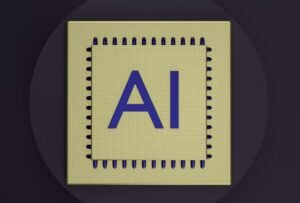Machine Learning vs Software Engineering
Machine learning and software engineering are two distinct disciplines in the field of computer science. While both involve the development and implementation of software, they have different focuses and approaches. Understanding the differences between these two fields can help individuals make informed decisions about their career paths and determine which area aligns better with their interests and goals.
Key Takeaways
- Machine learning involves developing algorithms that enable computers to learn from and make predictions or decisions based on data.
- Software engineering focuses on building robust and scalable software systems that meet specific requirements.
- Machine learning relies heavily on data analysis and statistical modeling techniques.
- Software engineering involves the entire software development life cycle, from design and coding to testing and maintenance.
- Machine learning projects often require a deep understanding of mathematics and algorithms.

Common Misconceptions
Machine Learning vs Software Engineering
There are several common misconceptions that people often have when it comes to differentiating between machine learning and software engineering. These misconceptions can lead to a misunderstanding of the capabilities and limitations of each field, so it’s important to clarify them:
- Machine learning and software engineering are two separate disciplines within computer science.
- Machine learning involves training algorithms to learn patterns and make predictions based on data, while software engineering focuses on designing, developing, and maintaining software systems.
- The goal of machine learning is to create models that can make accurate predictions and decisions, while software engineering aims to build reliable and efficient software applications.
Another misconception is that machine learning can replace software engineering completely. However, this is not the case:
- While machine learning can automate certain tasks and improve the efficiency of software systems, it still requires software engineering to build and maintain the infrastructure and pipelines that enable machine learning algorithms.
- Software engineering provides the foundation and framework for the implementation of machine learning algorithms, ensuring their integration into real-world applications.
- Additionally, software engineering expertise is crucial for handling data preprocessing, feature engineering, and model deployment, which are essential steps in machine learning projects.
Another misconception is that machine learning is always the best solution for every problem, regardless of the availability and quality of data:
- Machine learning relies heavily on data, and the quality and availability of data can significantly impact the performance and accuracy of machine learning models.
- In some cases, traditional software engineering approaches may be more suitable and efficient for solving certain problems where relevant and reliable data is limited.
- When considering the solution to a problem, it’s important to evaluate the feasibility and suitability of machine learning based on the specific context and constraints.
It’s also a misconception to assume that only experts in machine learning can work on machine learning projects:
- While expertise in machine learning is certainly valuable, collaboration between software engineers and machine learning practitioners can lead to successful machine learning projects.
- Software engineers can contribute their knowledge of software development principles, best practices, and system architectures, ensuring the development of scalable, maintainable, and robust machine learning systems.
- By working together, software engineers and machine learning experts can leverage their respective skills to create effective and efficient machine learning applications.

Introduction
In today’s rapidly advancing technological landscape, two terms that are often mentioned in the context of digital transformation are machine learning and software engineering. While both fields have their distinctive features and contribute significantly to various industries, it’s essential to understand their differences and how they complement each other. This article aims to shed light on the contrasting aspects of machine learning and software engineering through the use of ten engaging and informative tables.
Table 1: Overview of Machine Learning and Software Engineering
This table provides a high-level comparison of the key characteristics of machine learning and software engineering.
| Machine Learning | Software Engineering |
|---|---|
| Focuses on developing algorithms that enable computers to learn from and make predictions or decisions based on data | Focuses on designing, implementing, and maintaining software systems as per specific requirements |
| Utilizes statistical models and algorithms to improve performance over time | Adheres to structured methodologies and processes for efficient software development |
| Requires large datasets for training models and continuous learning | Requires defining software requirements and implementing logic |
Table 2: Applications of Machine Learning and Software Engineering
This table highlights how machine learning and software engineering find applications in different domains.
| Machine Learning | Software Engineering |
|---|---|
| Image recognition | Web development |
| Natural language processing | Mobile app development |
| Fraud detection | Database management |
Table 3: Skills Required in Machine Learning and Software Engineering
This table highlights the diverse skill sets necessary for professionals in each field.
| Machine Learning | Software Engineering |
|---|---|
| Strong knowledge of statistics and probability | Proficiency in programming languages like Java, Python, or C++ |
| Understanding of data preprocessing techniques | Experience with software design patterns and architecture |
| Expertise in machine learning algorithms | Ability to write clean, well-documented code |
Table 4: Tools and Technologies in Machine Learning and Software Engineering
This table showcases some popular tools and technologies employed in both fields.
| Machine Learning | Software Engineering |
|---|---|
| TensorFlow | Git |
| Scikit-learn | Jenkins |
| Keras | Agile methodologies |
Table 5: Limitations and Challenges in Machine Learning and Software Engineering
This table outlines the limitations and challenges faced in each field.
| Machine Learning | Software Engineering |
|---|---|
| Dependency on quality, curated data | Complexity due to evolving requirements and customer demands |
| Potential bias and ethical concerns in data-driven decision-making | Testing and debugging complex software systems |
| Difficulty in interpreting and explaining model predictions | Managing project timelines and resource allocation |
Table 6: Impact on Industries and Businesses
This table delves into the impact of machine learning and software engineering on various industries and businesses.
| Machine Learning | Software Engineering |
|---|---|
| Automating customer support with chatbots | Streamlining business operations with custom software solutions |
| Enhancing cybersecurity with anomaly detection | Enabling e-commerce platforms to handle high traffic and transactions |
| Optimizing logistics and supply chain management | Improving user experience through intuitive interfaces |
Table 7: Collaboration between Machine Learning and Software Engineering
This table emphasizes the importance of collaboration between these disciplines in developing advanced solutions.
| Machine Learning | Software Engineering |
|---|---|
| Provides insights and data-driven solutions for software development | Builds robust systems to deploy and operationalize machine learning models |
| Incorporates software engineering practices for scalable and efficient implementations | Utilizes machine learning to enhance system performance and decision-making capabilities |
| Continuous learning and optimization of machine learning models | Adaptation to emerging technologies and software development trends |
Table 8: Career Opportunities in Machine Learning and Software Engineering
This table showcases the diverse career opportunities available in each field.
| Machine Learning | Software Engineering |
|---|---|
| Data scientist | Software developer |
| Machine learning engineer | Systems analyst |
| AI researcher | Quality assurance engineer |
Table 9: Ethical Considerations in Machine Learning and Software Engineering
This table addresses the ethical considerations surrounding machine learning and software engineering.
| Machine Learning | Software Engineering |
|---|---|
| Fairness and bias in algorithmic decision-making | Data privacy and protection |
| Transparency and interpretability of machine learning models | Compliance with industry standards and regulations |
| Accountability for system failures and unintended consequences | Ensuring software security and preventing vulnerabilities |
Table 10: Future Trends in Machine Learning and Software Engineering
This table provides a glimpse into the future trends and advancements in these fields.
| Machine Learning | Software Engineering |
|---|---|
| Explainable AI enabling human experts to understand and trust machine learning models | DevOps practices for seamless integration of development and operations |
| Automated machine learning (AutoML) for easier model selection and tuning | Low-code and no-code development platforms for rapid software prototyping |
| Federated learning to enable collaboration and model training across distributed systems | Continued focus on cybersecurity and robustness in software solutions |
Conclusion
In summary, machine learning and software engineering are both vital components of the modern technological landscape. While machine learning focuses on developing algorithms that enable autonomous learning from data, software engineering concentrates on designing and implementing software solutions. Collaborating with one another, these fields play integral roles in driving innovation and addressing complex challenges across industries. The future holds incredible potential for advancements in machine learning and software engineering, paving the way for exciting developments and opportunities.
Frequently Asked Questions
What is the difference between machine learning and software engineering?
Machine learning focuses on developing algorithms and models that allow computers to learn and improve without being explicitly programmed, while software engineering involves the design, development, and maintenance of software systems or applications.
How does machine learning work?
Machine learning utilizes statistical techniques and algorithms to analyze and learn patterns from data. It involves training a model with a labeled dataset to make predictions or decisions based on new, unseen data.
What are some common applications of machine learning?
Machine learning is used in various fields, such as autonomous vehicles, image and speech recognition, natural language processing, recommendation systems, fraud detection, and predictive analytics.
What skills are required for a career in machine learning?
A career in machine learning typically requires knowledge of programming languages like Python or R, proficiency in statistics and probability, data visualization, and a solid understanding of algorithms and data structures.
How does software engineering differ from traditional coding?
Software engineering involves not just writing code but also encompassing various aspects such as requirement analysis, software design, testing, debugging, deployment, and maintenance. It focuses on developing reliable, scalable, and maintainable software systems.
Can a software engineer become a machine learning engineer?
Yes, a software engineer with the necessary skills and knowledge in mathematics, statistics, and machine learning algorithms can transition into a role as a machine learning engineer. Additional learning and experience may be required.
What are the ethical considerations in machine learning?
Machine learning raises ethical concerns regarding privacy, bias, fairness, and accountability. Care must be taken to prevent biases in datasets, address potential discriminatory outcomes, and ensure transparency in the decision-making process.
What are the challenges in deploying machine learning models?
Challenges in deploying machine learning models include data quality and availability, model interpretability, scalability, computational resource requirements, and the need for continuous model monitoring and updates.
How do machine learning and software engineering complement each other?
Machine learning and software engineering can complement each other to build intelligent applications. Software engineering provides the infrastructure, scalability, and reliability while machine learning adds the ability to learn from data and make intelligent decisions.
What is the future of machine learning and software engineering?
Both machine learning and software engineering are rapidly evolving fields. The future holds advancements in areas like deep learning, reinforcement learning, and automated software engineering, leading to smarter systems and more efficient development processes.




